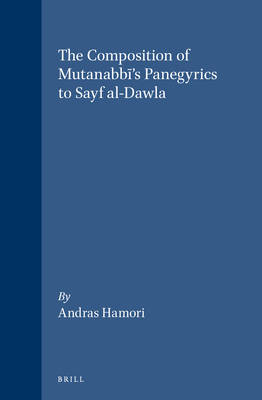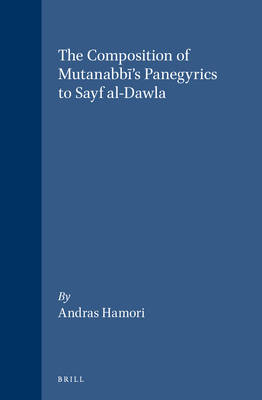
- Afhalen na 1 uur in een winkel met voorraad
- Gratis thuislevering in België vanaf € 30
- Ruim aanbod met 7 miljoen producten
- Afhalen na 1 uur in een winkel met voorraad
- Gratis thuislevering in België vanaf € 30
- Ruim aanbod met 7 miljoen producten
Zoeken
Omschrijving
The purpose of this study is to identify and describe recurrent patterns of composition in the twenty two major panegyrics Mutanabbī wrote to Sayf al-Dawla during his stay at the ḥamdānid court in Aleppo between 337/948 and 345/956.
It discusses the types of utterance used in endings and in cadential lines before definable internal boundaries, the organising conventions of the passages that lead into and out of chronicles of military campaigns, the non-random placement of certain crescendo motifs, various means of local organisation in poems without events, etc. It also considers brief differences in technique between the Aleppo period and Mutanabbī's earlier and later work, and casts a glance at possible predecessors.
Based on a sizable and coherent sample of poetry, this study demonstrates that compositional rules and predilections played a pervasive role in Mutanabbī's writing in the years when his career was at its height.
It discusses the types of utterance used in endings and in cadential lines before definable internal boundaries, the organising conventions of the passages that lead into and out of chronicles of military campaigns, the non-random placement of certain crescendo motifs, various means of local organisation in poems without events, etc. It also considers brief differences in technique between the Aleppo period and Mutanabbī's earlier and later work, and casts a glance at possible predecessors.
Based on a sizable and coherent sample of poetry, this study demonstrates that compositional rules and predilections played a pervasive role in Mutanabbī's writing in the years when his career was at its height.
Specificaties
Betrokkenen
- Auteur(s):
- Uitgeverij:
Inhoud
- Aantal bladzijden:
- 140
- Taal:
- Engels
- Reeks:
- Reeksnummer:
- nr. 14
Eigenschappen
- Productcode (EAN):
- 9789004093669
- Verschijningsdatum:
- 1/01/1992
- Uitvoering:
- Hardcover
- Formaat:
- Genaaid
- Afmetingen:
- 162 mm x 247 mm
- Gewicht:
- 403 g

Alleen bij Standaard Boekhandel
+ 393 punten op je klantenkaart van Standaard Boekhandel
Beoordelingen
We publiceren alleen reviews die voldoen aan de voorwaarden voor reviews. Bekijk onze voorwaarden voor reviews.








